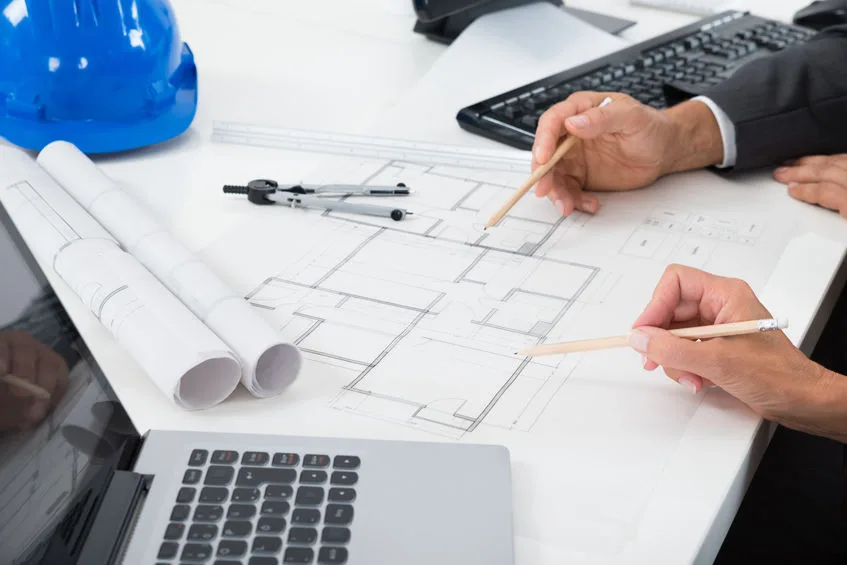Architect Career Path: Skills, Training, and Growth Guide
Architect Career Path: Skills, Training, and Growth Guide
Blog Article
Understanding the Diverse Occupation Paths Available for Aspiring Architect
As an aspiring Architect, you have a globe of profession paths waiting for you. Whether you're attracted to conventional design or the nuances of lasting style, there's a particular niche that lines up with your rate of interests.
Conventional Style: Creating Buildings and Structures
Standard style concentrates on making buildings and frameworks that blend functionality with visual charm. As you discover this area, you'll appreciate the elaborate balance in between type and objective. You'll find out to draw motivation from historical designs, incorporating elements like balance, materials, and workmanship. Your styles can show social heritage, showcasing regional customs while meeting modern needs.
You'll establish abilities in drafting, model-making, and website evaluation, allowing you to visualize and interact your concepts properly. Involving with clients, you'll need to understand their vision and convert it right into feasible styles.
Moreover, building codes and sustainability methods are crucial in your job, ensuring your frameworks are environmentally friendly and secure. As you grow in your job, you'll discover possibilities in household, business, or perhaps reconstruction projects, each offering unique difficulties. Accepting typical architecture leads the way for a fulfilling job that admires the past while shaping the future.
Urban Preparation: Shaping Neighborhoods and Public Spaces
As an aspiring Architect, you can play an essential function as a city planner, changing exactly how areas connect and operate. By employing neighborhood interaction strategies, you'll ensure that locals have a voice fit their environment. Plus, integrating sustainable style principles will certainly help develop rooms that not just meet today's requirements yet additionally secure the future.
Function of Urban Planners
While lots of may think of architects as the sole dreamers behind buildings, city coordinators play an essential function in shaping the more comprehensive landscape of neighborhoods and public rooms. By working together with numerous stakeholders, you'll aid develop parks, transportation systems, and residential areas that advertise social interaction and ease of access. Your knowledge in spatial layout and community dynamics enables you to imagine future development while preserving cultural heritage.
Area Interaction Approaches
Effective neighborhood engagement methods are important for city organizers to ensure that the voices of residents are heard and valued in the preparation process. To foster significant discussion, you ought to focus on open discussion forums and workshops where neighborhood participants can express their ideas and concerns. Usage surveys and social networks to get to a more comprehensive target market, making certain varied viewpoints are included. Teaming up with neighborhood organizations can improve depend on and facilitate deeper connections. It is very important to provide clear details regarding decision-making procedures and proposed projects, permitting locals to really feel informed and empowered. By proactively including and paying attention comments, you'll create rooms that reflect the area's demands, ultimately causing more sustainable and successful city atmospheres. Accept openness and constant dialogue for long-term impact.
Lasting Layout Principles
When developing city areas, incorporating sustainable design principles is critical for developing settings that thrive both ecologically and socially. You need to begin by focusing on power performance, making use of products that decrease waste and promote recycling. Take into consideration integrating environment-friendly rooms, like parks and gardens, to improve biodiversity and improve air quality. Advertising walkability and public transportation can minimize reliance on autos, fostering a healthier area.
Designing with water preservation in mind is additionally key-- think of rainfall yards and permeable surfaces to take care of stormwater. Entailing neighborhood participants throughout the preparation procedure guarantees that the areas you develop fulfill their needs and urge social interaction. By welcoming these principles, you'll add to vivid, lasting city landscapes that profit everyone.

Landscape Architecture: Developing Lasting Outdoor Atmospheres
As you explore landscape design, you'll uncover necessary style concepts that develop useful and stunning exterior areas. Lasting techniques play an essential function in making sure these atmospheres grow while lessening environmental effect. And also, you'll discover a variety of job chances that allow you to make a real difference in just how people communicate with nature.
Style Principles in Landscape
Comprehending layout principles in landscape style is necessary for developing sustainable outside settings that integrate with nature. You'll need to contemplate aspects like range, proportion, and balance to guarantee your designs really feel natural and welcoming. Including indigenous plants not only improves biodiversity yet likewise reduces water usage, making your landscape resistant. Think of the flow of room and how individuals communicate with it; pathways and seating areas must invite expedition and leisure. Additionally, take notice of seasonal modifications, making with products that match the surroundings year-round (Architect). By prioritizing sustainability and appearances, you can produce outside areas that enrich the community and promote wellness. Accepting these concepts will set a solid foundation for your profession in landscape design.
Lasting Practices Introduction
Lasting methods in landscape design not only concentrate on visual appeals but also focus on eco-friendly health and resource conservation. By incorporating indigenous plants, you boost biodiversity and minimize the requirement for chemical fertilizers and pesticides. Executing effective watering systems helps preserve water and minimizes runoff, shielding neighboring ecosystems. You can develop rooms that promote soil wellness, such as exercising and utilizing natural products permaculture principles. Furthermore, incorporating green framework, like rainfall gardens and porous sidewalks, help in stormwater monitoring and lowers city warmth. You contribute to a healthier earth and give spaces that cultivate area link when you create outdoor environments with sustainability in mind. Eventually, these methods guarantee your designs profit both individuals and the environment for years to find.
Profession Opportunities Exploration
With a solid structure in lasting techniques, landscape design provides a range of job paths that permit you to make a meaningful influence on the environment. You can function as a landscape developer, developing aesthetically pleasing and practical outdoor areas, or focus on ecological remediation, assisting to revive damaged environments. Urban planners often work together with landscape engineers to develop eco-friendly areas in metropolitan settings, improving city livability. If you're enthusiastic about education and learning, think about ending up being a landscape style educator, motivating future generations. In addition, you may deal click here with nonprofits concentrated on environmental sustainability or engage in research study to introduce new practices. Each course not only shapes gorgeous settings however likewise cultivates a healthier planet for future generations.
Lasting Style: Concentrating On Eco-Friendly Practices
As you explore your profession in architecture, embracing environment-friendly methods can set you apart in a competitive field. Lasting layout focuses on creating buildings that lessen environmental impact while boosting owner wellness. By incorporating eco-friendly products, energy-efficient systems, and lasting structure methods, you'll contribute to a greener future.
Start by acquiring understanding of environment-friendly qualifications like LEED or BREEAM, which can boost your credentials. Consider exactly how natural light, air flow, and thermal efficiency can maximize layout. Team up with designers and environmental experts to innovate services that lower waste and conserve resources.
Don't fail to remember the importance of area participation-- engaging neighborhood stakeholders can inspire designs that integrate with the atmosphere. As customers significantly focus on sustainability, your proficiency in green techniques will not only draw in jobs but additionally accomplish your interest for responsible design. Welcome this important element of the occupation, and view your occupation grow.
Historical Conservation: Securing and Bring Back Cultural Heritage
While you start on your architectural journey, consider the crucial duty of historic preservation in preserving our social heritage. This field concentrates on the security and reconstruction of significant structures, websites, and frameworks that inform the tales of our past. By participating in historic preservation, you'll aid protect the building tradition that shapes area identification.
As a historic preservation Architect, you'll examine historical value and assess the condition of frameworks. You'll function closely with guardians and historians to assure authentic restoration techniques are used. This job path permits you to mix creative thinking with research study, allowing you to make remedies that appreciate original materials and craftsmanship.
Your work not just adds to sustainability by recycling existing buildings however also fosters a feeling of satisfaction within communities. Accepting this path will assist you end up being a guardian of background, preserving the tales and aesthetic appeals that improve our lives.
Interior Style: Enhancing Indoor Spaces
Historic preservation and indoor architecture both share a commitment to enhancing the developed environment, but they concentrate on various facets. While historic conservation emphasizes maintaining a structure's historical and cultural worth, indoor style absolutely nos in on optimizing interior spaces for functionality and appearances.
As an ambitious Architect, you'll locate that indoor design allows you to mix imagination with technological abilities. You'll develop areas that not only look good however likewise advertise convenience and effectiveness. This field involves understanding exactly how light, color, and products communicate within a room, website influencing state of mind and use.
You'll function here on various tasks, from household homes to industrial offices, making sure that each environment fulfills the requirements of its passengers. By prioritizing user experience, you can transform interiors into functional and motivating rooms, making a considerable influence on how people interact with their surroundings. Welcome the opportunity to enhance indoor environments and form the way individuals function and live.
Industrial Design: Merging Capability With Visual Appeals
Commercial design plays an important function in developing products that perfectly blend visual appeals with functionality, guaranteeing that what you make use of day-to-day is not just visually appealing yet also functional. As an ambitious Architect, you could involve yourself in this area, concentrating on creating whatever from furnishings to customer electronics. Your job includes recognizing customer requirements, materials, and producing procedures, enabling you to develop innovative options that boost day-to-day experiences.
In commercial layout, you'll often collaborate with engineers, producers, and marketers, making sure that your layouts are not just gorgeous however additionally viable. You'll learn to stabilize form and feature, focusing on use without compromising design. By refining your abilities in sketching, 3D modeling, and prototyping, you'll be well-equipped to bring your concepts to life. This occupation course supplies a dynamic environment where creativity fulfills practicality, making it a rewarding choice for architects thinking about forming the items of tomorrow.
Frequently Asked Concerns
What Educational Qualifications Do I Need to End Up Being a Designer?
To end up being a designer, you'll need an expert degree in design, generally a Bachelor's or Master's. Additionally, you'll have to complete a teaching fellowship and pass the Architect Enrollment Exam to practice lawfully.
Exist Qualification Needs for Various Architectural Career Paths?
Yes, there're qualification needs for numerous building paths. Architect. You'll require to pass examinations, full teaching fellowships, and often pursue specialized training, relying on your selected focus, like landscape design, urban layout, or historical preservation
What Software Application Abilities Are Necessary for Architects Today?

Exactly How Can I Gain Practical Experience While Researching Architecture?
You can acquire practical experience by interning at architectural firms, joining style competitions, volunteering for neighborhood projects, or teaming up with classmates on real-world assignments. These possibilities enhance your skills and build valuable connections in the industry.
What Work Opportunities Exist Outside Traditional Style Firms?
You can explore numerous task possibilities outside conventional architecture firms, like urban preparation, interior decoration, landscape style, building and construction management, property development, and even functions in sustainability consulting. Each offers distinct obstacles and benefits.
Whether you're attracted to conventional architecture or the subtleties of sustainable layout, there's a niche that straightens with your passions.When developing urban areas, including sustainable style concepts is critical for creating environments that grow both ecologically and socially.As you explore landscape style, you'll find essential layout concepts that produce stunning and useful outside rooms.Recognizing layout concepts in landscape style is essential for producing lasting exterior environments that balance with nature.In commercial design, you'll typically work together with marketers, manufacturers, and engineers, making sure that your layouts are not just stunning but additionally feasible.
Report this page